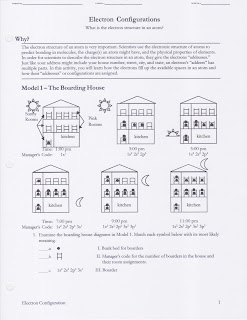ESSENTIAL QUESTION: What Keeps Substances Together?
RELEVANCE: The Bonds that Tie
NGSSS: SC.912.P.8.6; MAFS.912.N-Q.1.1; LAFS.910.WHST.1
LEARNING OBJECTIVES: Students will be able to:
-distinguish between ionic, covalent bonds, and metallic bonds and explain how they are formed.
-draw Lewis structures for simple molecules and molecules with multiple bonds.
-continue quarterly project how does pH affect plant growth.
BELL RINGER: Atomic structure reteach handout
VOCABULARY: anion, cation, chemical bond, conductivity, covalent bond, covalent, bond, delocalized electrons, diatomic molecule, electrolyte, electron dot, electronegativity, formula unit, intermolecular forces, ionic bond, Lewis dot structure, metallic bond, molecule, monatomic ion, oxidation number, polar covalent, polyatomic ion, solubility, structural formula
HOME LEARNING: HL 6 Chemical Bonding
AGENDA
WHOLE GROUP
We shared correlations with other classes.
The bell ringer was a review/reteach of atomic structure. It will be graded as a differentiated learning activity, therefore will not be shared online.
Home learning 5 was collected and reviewed. Home learning 6 was distributed. You can find it below.
This is HL 6. Be careful to follow directions.
Students continued with the notes from the powerpoint presentation on bonding. Notes are taken on the handout given last class period.
Garden measurements and observations were made.
SMALL GROUP/INDEPENDENT PRACTICE/DI
Students who compete work early should go to
70% or higher on pre-test Khan’s academy chemical bonds
less than 70% on pre-test- WGBH PBS Bonding (ionic and covalent)
HOTS:
-What type of bonds would you expect noble gases to form and why?
-Explain why ionic bonds are weaker than covalent bonds. Use your knowledge of solutions in your answer.
EXIT STRATEGY: Three things I learned: two things I found interesting: I question I still have.














